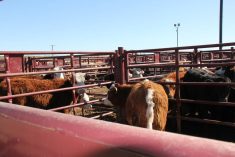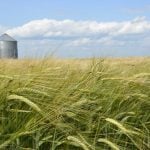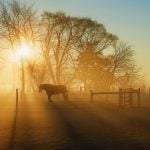Australia is one of the largest beef exporters in the world and will have nearly 29 million head of cattle this year, according to Meat and Livestock Australia. New South Wales and Queensland account for more than 70 per cent of the red meat and livestock off-farm sales.
The red meat industry, which includes beef, sheep and goats, manages about half of Australia’s land mass as little of Australia’s land is suitable for crops. One interesting fact is that Australia is the world’s largest exporter of goat meat, all coming from feral herds.
The Australian cattle industry is divided more or less into two regions, with half or more of the cattle in northern Australia and characterized by Bos indicus genetics, large herds, extensive grazing and reliance on live export to Southeast Asia and beyond. Southern Australia has a temperate-climate cattle-production system with British and continental genetics, smaller more intensive grazing properties, and a higher proportion of cattle finished in feedlots and processed in domestic abattoirs. With a small human population, most Australian beef is exported.
Read Also
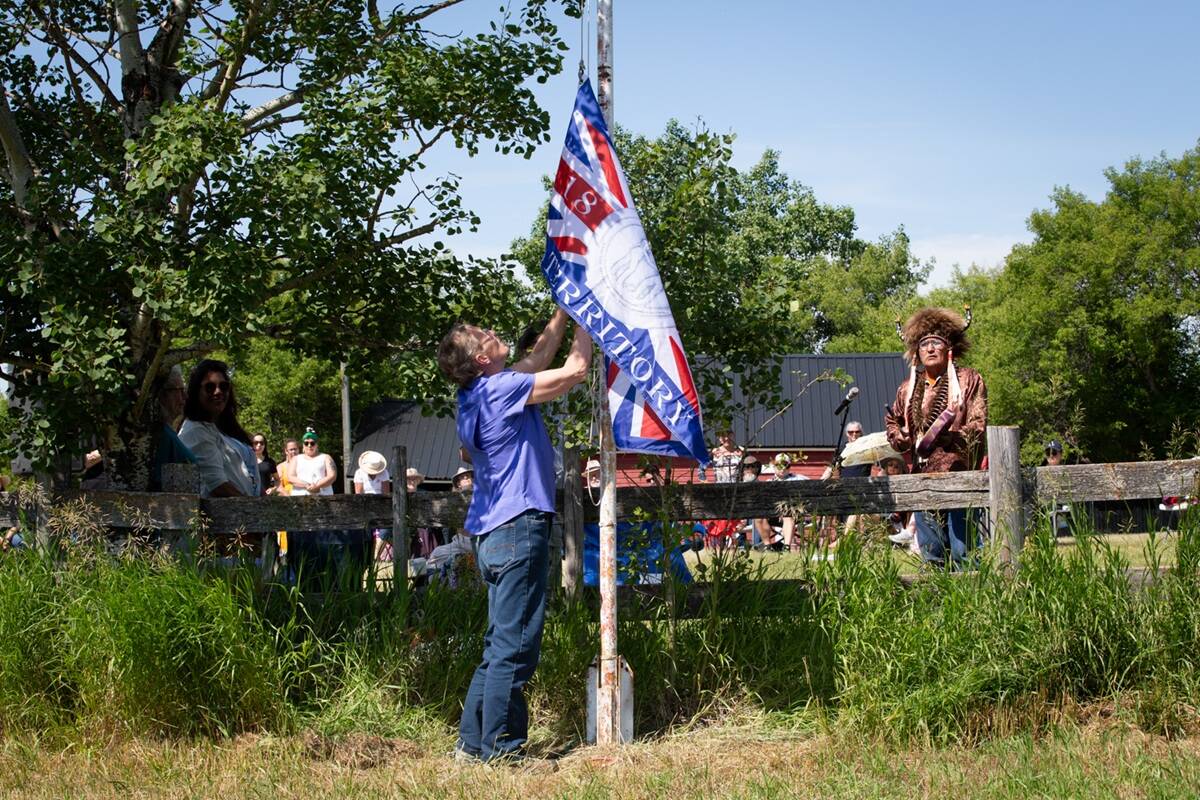
Treaty Land Sharing Network expands reach in Saskatchewan and Alberta
The Treaty Land Sharing Network, which connects land holders with First Nations and Metis people, has expanded since it began in 2018
Although beef cattle numbers fell due to drought a few years ago, conditions have since improved and the national herd is on the rebound. As well, the value of the industry has climbed as beef prices increase.
Approximately half the total cattle numbers are breeding females and replacement heifers, with the north having a higher proportion of females than the south. Northern breeder herds predominate in the semi-intensive and extensive grazing zones of northern Australia. Generally, with lower rainfall, systems become more extensive and breeder operations more important with calves sold into backgrounding or live export markets. Pasture-based finishing occurs as rainfall and pasture productivity increase.
A Canadian view of Australia
Dr. Ed Charmley, former research scientist with Agriculture and Agri-Food Canada, has worked for the past 16 years as a forage and beef cattle researcher with Commonwealth Scientific and Industrial Research Organization (CSIRO), Australia’s national research organization at Townsville, Queensland. He is interested in optimizing forages for enhanced animal performance and beef quality. He has focused on beef production in extensive, sub-tropical rangelands and savannas. His current research activities involve the use of technology to record hard-to-measure animal and environmental variables in the field, understanding livestock methane emissions from extensive grazing systems and improving the feed efficiency of ruminants. “In many ways, Canadian and Australian beef farmers are both beset by similar constraints but are dealt with differently,” says Charmley. “Dealing with climate variability in Australia is really beginning to affect production. In 2019 we had huge floods and estimates of half a million cattle drowning or dying of cold and wet are not exaggerated.”
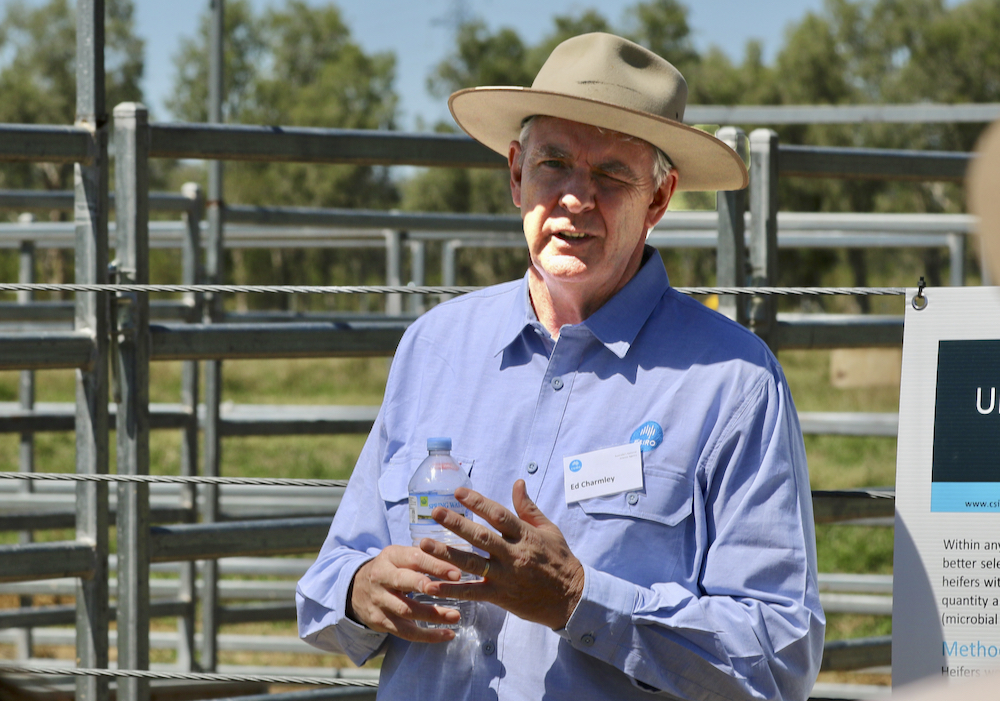
Charmley is involved with the northern cattle industry, where reducing the number of days to market through improved pastures is important. Currently, he’s working with a seed company promoting the tropical legume Desmanthus, which looks like creeping vetch, to boost pasture productivity and reduce methane in cattle.
“What we are looking for is a legume that can survive and thrive in the drier parts of northern Australia. This story is so similar to Canada, where getting a well-adapted legume in grass pastures is also key to boosting pasture productivity,” says Charmley.
Carbon is a hot topic in Australia right now, too. “So-called carbon farming is being touted by the carbon marketing industry as the next big thing. But producers are wary and uncertain.”
Agriculture is seen as a potential way to lock carbon in soil, which is good for cattle generally, says Charmley. On the flipside, trees are also seen as a carbon capture option, which is not so good for cattle, he adds.
“With about 75 per cent of agricultural emissions coming from methane we are also looking for ways to massively cut livestock methane. A seaweed-feeding trial developed here at our research centre by another ex-Nova Scotian, Rob Kinley, looks to be one of the front-runners with reductions of methane of over 90 per cent in research trials. He had originally been working with a farmer from P.E.I. who initially found the value in feeding seaweed to cattle.”
Charmley notes that land prices are generally climbing in Australia as well. The industry is also concerned about biosecurity, as foot-and-mouth and lumpy skin disease have both been found in Indonesia, which is quite close to Australia.
“So that could be a real problem for us in the future. Lumpy skin disease is insect-borne and could easily cross the sea and get into the feral herd in Australia’s far north.”
Research and extension landscape
Charmley says another issue they face is getting farmers to adopt new technology and ideas. Organizations such as Meat and Livestock Australia, state departments of agriculture and research councils work “more or less together to get producer needs into the funding agenda and see results adopted. We find that the cost of the new technology, the risks associated with early adoption, the complexity of the technology and the new infrastructure required to make it work are all factors or barriers in the new technology being adopted by producers.” Meat and Livestock Australia is an industry body that collects producer levies for promotion, research and extension. It allocates funds on a competitive basis. Meat and Livestock Australia has boldly embarked on making the red meat industry (beef, lamb, and goat production, feedlot feeding and meat processing) carbon-neutral by 2030. Initially, there was a lot of pushback from producers, but their attitudes are changing.
Australian livestock producers now have access to weekly information on their pasture status with the release of a new tool called the Australian Feedbase Monitor. This is a joint effort initiative by Meat and Livestock Australia and is the world’s first tool that provides producers with satellite-derived estimates of pasture growth, biomass and ground cover for their property. The tool’s satellite maps are updated every five days, showing the variability in pasture biomass for a producer’s entire farm at one-hectare resolution.
Meat and Livestock Australia has a website with lots of interesting videos on the Australian beef industry at mla.com.au. The organization has also developed a website to help people plan their meals, at australianbeef.com.au. The site provides recipes and nutritional facts about Australian beef. In addition, there is information on Australian cattle, sheep and goat production, animal welfare and how their industry is protecting the environment. Australian Beef’s campaign “You’re Thinking Beef” is highlighted on this website and is designed to increase consumer sales of beef and provide solutions for “what’s for dinner.” The campaign will deliver recipe inspiration, useful tips and tricks at key times during the year.
“Extension or adoption has long been the function of state departments, much like Canada. However, with budgetary cuts and the advance of online communications, there are fewer field reps than there used to be. In southern Australia, private consultants are filling the gap, while in the north, the so-called ‘tyranny of distance’ makes it hard for the private consulting sector to make a living.”
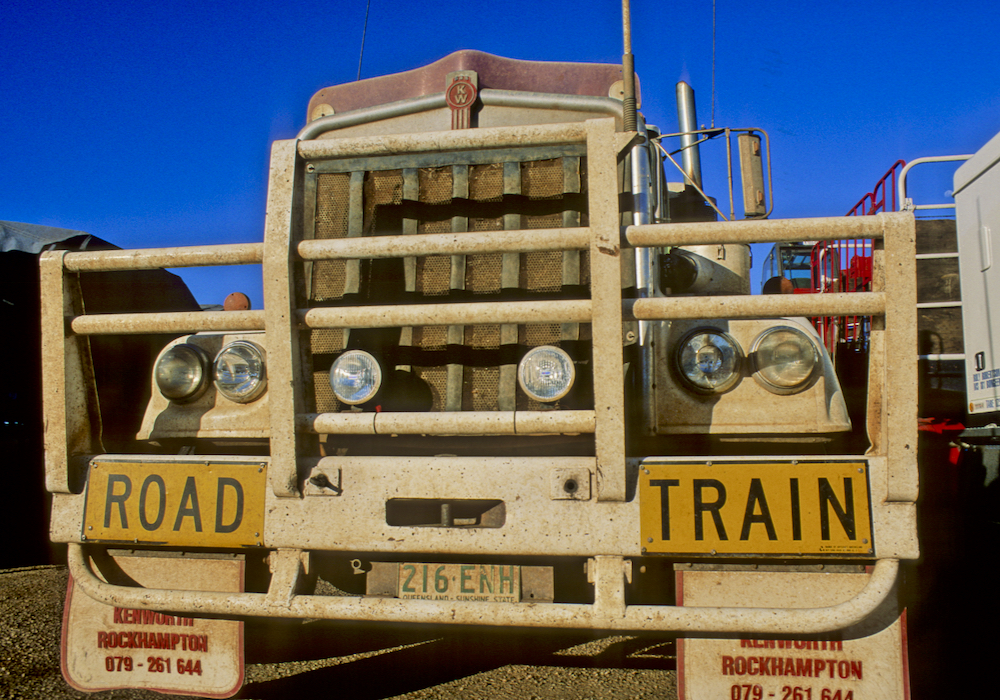
Meat and Livestock Australia is now moving more towards extension to fill this gap, Charmley adds. Northern Breeding Business (NB2) is an initiative to put producers in the driver’s seat when it comes to improving their business.
“With co-funding from (Meat and Livestock Australia), producer groups across the north are forming, to work out for themselves how to improve their feed base or pasture and herd management through locally based facilitation and access to experts,” says Charmley.
Big beef business
“Here the beef industry is a full-time occupation for most beef cattle producers with large corporate as well as large family-owned enterprises,” says Charmley.
“Our average herd size here would be much larger than in Canada, I suspect, being around 400 head in the south and 1,600 in the north.”
For instance, the Australian Agriculture Company and the North Australia Pastoral Company are big corporations in the cattle business. The Australian Agriculture Company is the oldest continuously operated company in Australia. Established in 1824, the company owns and operates cattle operations and feedlots comprising 382,000 head and farming enterprises on 6.4 million hectares of land in Queensland and the Northern Territories. The company specializes in grain-fed and Wagyu beef production.
The North Australian Pastoral Company is another major player in the Australian beef industry and is a leader in sustainable beef production. Founded in 1877, the company now has 200,000 head and six million hectares of land on 14 properties in Queensland and the Northern Territories. The people at North Australia Pastoral brand over 60,000 calves each year. They are Australia’s biggest producer of prime-quality branded beef with complete traceability from birth to processing, and Australia’s first carbon-neutral beef brand.
The North Australian Pastoral Company is recognized as a composite breeding pioneer among the nation’s large pastoral companies. Composite breeding aims to take advantage of the heterosis effects from as many breeds as possible.
In 1986, the company started developing a self-perpetuating composite breeding program to promote tropical adaptation, fertility and meat quality traits, involving Shorthorn, Brahman, Charolais and Hereford, Tuli and Red Angus breeding stock. The North Australian Pastoral Company claims to be the world’s largest composite breeding program.
But it’s not all big business. With 45,000 beef enterprises in Australia, there remains a strong tradition of family-owned or leased properties supporting a vibrant rural economy and lifestyle. These are mostly full-time businesses with family labour supported by contractors for high-work demands such as mustering or cattle roundup, fencing and woody weed (tree) control. Many are looking into complementary enterprises such as eco-tourism and carbon farming.
Any comparison between Australia and Canada would be incomplete without some evaluation of each country’s climate. It has been many years since Charmley has seen a real Canadian winter and during the interview this winter, he found it hard to wrap his head around our recent weather.
“It has been unseasonably warm here, with temperatures regularly at 33 degrees. Normally it would be lower than 30 that time of year. It is amazing how much more uncomfortable just two or three degrees makes things. Your -40 C sounds a bit cold. The irony is here it is too hot to spend time outside. With high humidity and temperatures over 33 C, you so much as step outside and break out in a sweat! The weather certainly is getting erratic,” says Charmley.
– Duane McCartney is a retired forage-beef systems research scientist at Lacombe, Alta.




